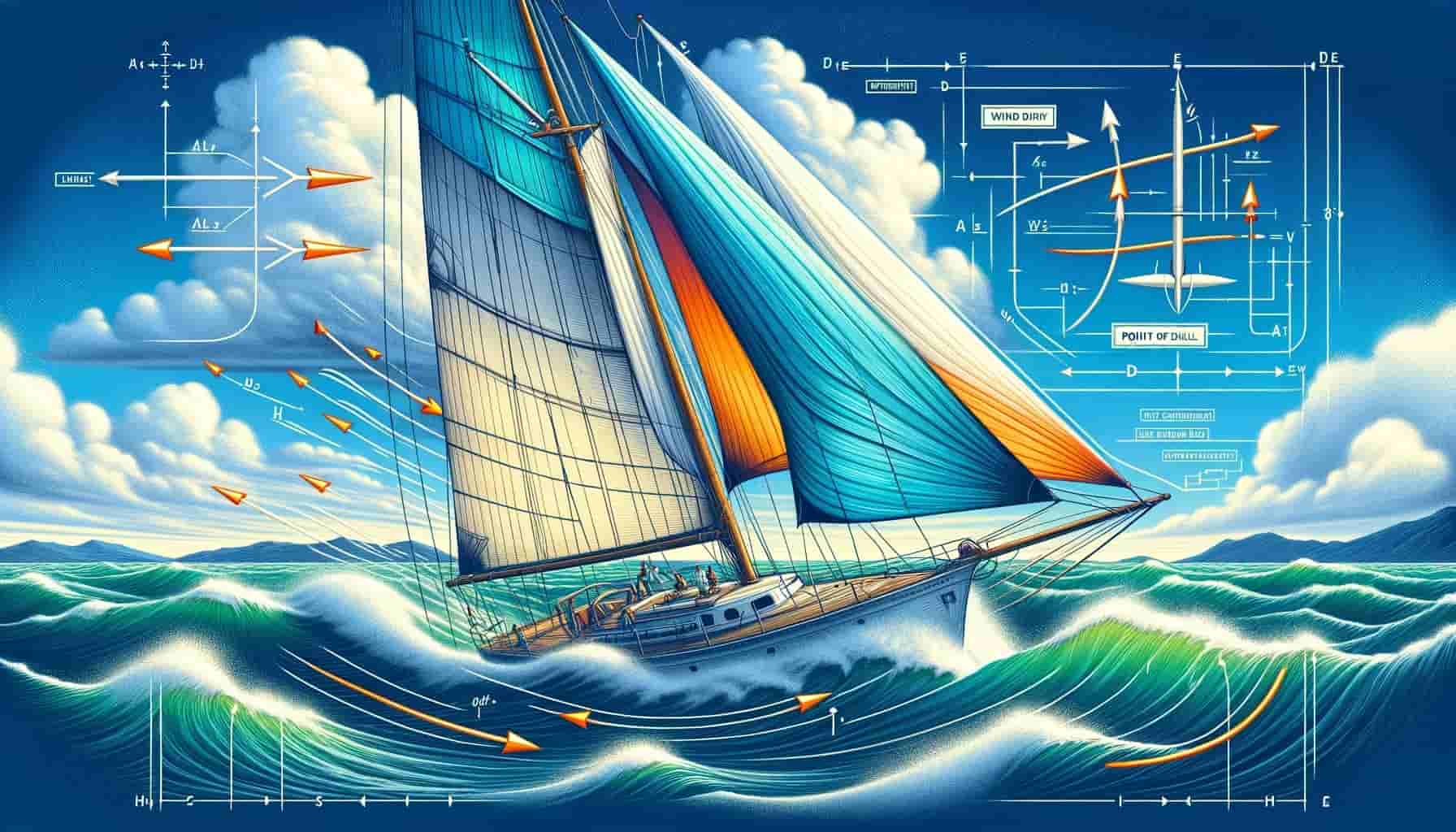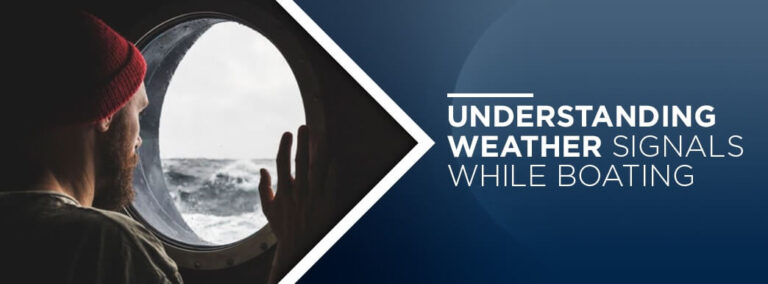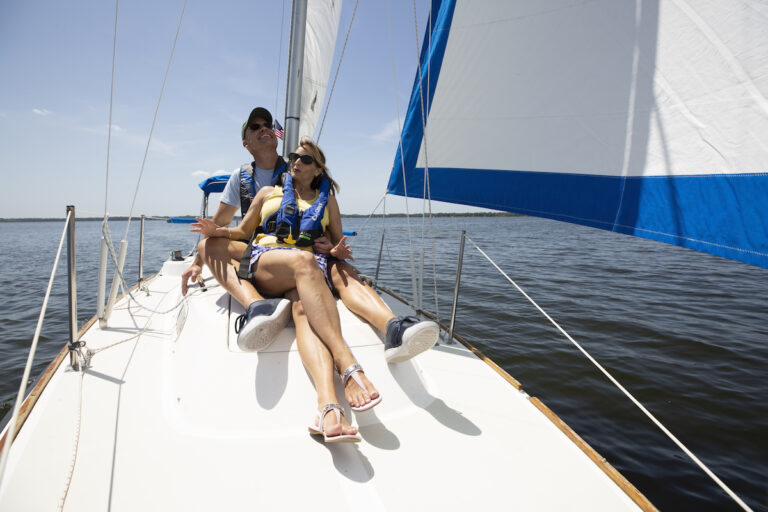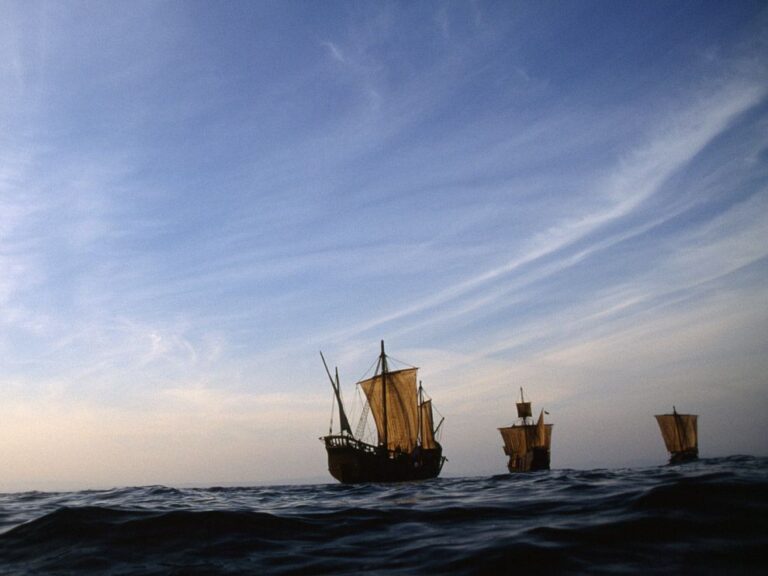The Science Behind Sailing: How Boats Move
Boats move through the science of sailing, which involves utilizing wind power to propel the vessel. In sailing, wind fills the sails, creating lift and generating force that propels the boat forward.
Sailing is an age-old practice that has fascinated people for centuries. The beauty of a sailboat gliding effortlessly across the water is a sight to behold. But have you ever wondered how boats actually move? The answer lies in the science of sailing, a fascinating combination of physics and engineering.
By harnessing the power of the wind, sailboats are able to navigate the vast expanses of the ocean. We will delve into the intricacies of how boats move, exploring the fundamental principles behind sailing and uncovering the ways in which wind propels these majestic vessels forward.
So, let’s set sail and embark on a journey to discover the science behind sailing and the remarkable mechanics that enable boats to move through the water.
Understanding The Basic Physics
Learn the basic physics behind sailing and discover how boats move effortlessly on the water. Explore the science behind this fascinating phenomenon and understand the principles that make sailing possible. Discover the mechanics and forces at play that allow boats to harness the wind and glide through the waves.
The Science Behind Sailing: How Boats Move
Have you ever wondered how boats can glide through the water without a motor? It’s all thanks to the fascinating world of physics! Understanding the basic principles of sailing can help us appreciate the elegance and efficiency of this timeless method of transportation.
We will delve into the science behind sailing, exploring how boats are propelled by the power of the wind. So hold onto your sails and let’s dive into the world of sailing!
The Role Of Wind In Propelling A Sailing Boat
When it comes to sailing, the wind takes center stage, acting as the driving force behind a boat’s movement. Here’s a closer look at the role of wind in propelling a sailing boat:
- Wind as a Source of Energy: The wind is a powerful force that can be harnessed to propel boats forward. As the wind blows against the sail, it creates a force called lift, similar to how airplane wings work. This lift is what propels the boat through the water.
- Harnessing Wind Power: Sailing is all about capturing and utilizing the energy of the wind effectively. Here’s how it’s done:
- Sail Design: The design of the sail plays a crucial role in harnessing wind power. Sails are typically curved, creating an airfoil shape. This shape helps generate lift by creating a pressure difference between the two sides of the sail.
- Sail Placement: Proper sail placement is essential for harnessing the power of the wind. By adjusting the angle of the sail relative to the direction of the wind, sailors can maximize the lift force and control the direction of the boat.
- Aerodynamics and Trim: Optimizing the shape of the sail and adjusting its trim angle allows sailors to fine-tune the performance of the boat. By making these adjustments, sailors can achieve better speed, stability, and control over the boat’s direction.
Understanding the role of wind and how to harness its power through sail design and placement is fundamental to successful sailing. The next time you see a sailing boat gracefully gliding across the water, you’ll have a deeper appreciation for the science at work.
Now that we have a solid understanding of how the wind propels a sailing boat, let’s explore the fascinating world of sail design and placement in more detail.
The Forces At Play
Discover the fascinating science behind sailing and how boats effortlessly glide through the water. Uncover the forces that propel these vessels forward and unlock the secrets behind their smooth and efficient movement. Explore the physics behind sailing and gain a deeper understanding of this age-old maritime art.
The Science Behind Sailing: How Boats Move
Sailing is an incredible combination of skill, engineering, and physics. To understand how boats move, we need to dive into the forces at play. In this section, we will explore two key forces: lift and drag, and how they generate force for sailing.
We will also delve into the importance of managing pressure to control the center of effort, and the role of the centerboard or keel in achieving balance.
Lift And Drag: How Sails Generate Force
- Aerodynamics of Sails: Sails work similarly to airplane wings by utilizing the power of wind to generate lift. They are designed to effectively harness the energy in the air and propel the boat forward.
- Lift: When wind flows around a sail, it creates different pressures on both sides. The side with lower pressure generates lift, pulling the boat in the desired direction.
- Drag: Sailboats also experience drag, which is the resistance encountered due to the interaction between the hull, sail, and water. Minimizing drag is crucial to achieve higher speeds and efficiency.
Managing Pressure: Controlling The Center Of Effort
- Center of Effort: The center of effort refers to the point where the total force generated by the sail acts. It is essential to manage and control this force to maintain stability and maneuverability.
- Balance: Properly adjusting the sails helps in balancing the forces acting on the boat. Shifting the center of effort allows sailors to control the direction and speed of the boat, maximizing performance.
- Trimming the Sails: By adjusting the sail’s angle and tension, sailors can manage the center of effort. This allows them to optimize the lift and minimize drag, improving the efficiency of the boat.
Balancing Act: The Role Of Centerboard Or Keel
- Stability: Centerboards (or keels on larger boats) play a vital role in maintaining stability. These appendages help to counteract the lateral forces caused by the wind, preventing the boat from tilting excessively.
- Upwind Performance: When sailing upwind, a centerboard or keel acts as a resistance to the lateral force of the wind, allowing the boat to maintain a steady course.
- Downwind Performance: On downwind courses, the centerboard or keel is lifted, reducing drag and enabling the boat to glide smoothly through the water.
Understanding the forces at play in sailing is crucial for sailors to navigate the waters effectively. Lift and drag facilitate the generation of force through sails, while managing pressure helps control the center of effort. The balance provided by the centerboard or keel ensures stability and enhances the boat’s performance.
With this knowledge, sailors can harness the power of wind and propel their vessels gracefully through the water.
Navigating The Course
Discover the fascinating science behind sailing and learn how boats move effortlessly through the water in ‘Navigating the Course’. Unveiling the secrets behind this timeless skill, this blog post delves into the mechanics that power boats forward, making for an engaging read for both seasoned sailors and curious minds alike.
Sailing is a fascinating sport that requires skillful maneuvering and an understanding of the elements. When it comes to navigating a course, sailors employ various techniques to change direction and harness the power of the wind. Let’s explore two key sailing maneuvers and how they contribute to the excitement and challenge of sailing.
Tacking And Jibing: Changing Direction With The Wind
Tacking and jibing are sailing maneuvers used to change course by utilizing the wind’s direction. Each technique is employed in different sailing conditions and serves a specific purpose:
- Tacking: When sailing upwind or at an angle to the wind, tacking allows the boat to switch from one side of the wind to the other. Here’s how it works:
- The boat turns its bow through the wind in a deliberate manner.
- Wind changes from one side of the boat to the other.
- Sails are adjusted to maintain optimal wind pressure and speed.
- Jibing: This maneuver is used when sailing downwind or with the wind coming from behind. Jibing involves changing the boat’s direction by turning the stern through the wind. Here’s a breakdown of the process:
- The boat’s stern is brought through the wind to change course.
- The boom (horizontal spar holding the mainsail) swings across the boat.
- Sails are adjusted to maintain control and optimize speed.
These maneuvers require skillful coordination between the sailor and the wind to execute properly. They play a crucial role in changing direction and successfully navigating the course.
Upwind Sailing: Sailing Against The Wind
Upwind sailing, also known as beating or tacking, is the act of sailing into the wind or at an angle towards it. Despite the paradox of sailing against the wind, skilled sailors can make impressive progress with strategic techniques:
- Close Haul: Sailors trim the sails tightly to maximize their surface area’s interaction with the wind, allowing the boat to sail closer to the wind than one might expect.
- Tacking: By employing the tacking maneuver, sailors efficiently make their way upwind, zigzagging from one tack to another.
Upwind sailing can be challenging due to the forces of the wind pushing against the boat. Skillful navigation and a solid understanding of wind dynamics are essential for success in this aspect of sailing.
Downwind Sailing: Maximizing Speed With The Wind
When the wind is blowing directly from behind the boat, sailors engage in downwind sailing. This exhilarating technique requires harnessing the power of the wind to maximize speed while maintaining control:
- Running: Sailing directly with the wind is called running. This technique allows sailors to make the most of the wind’s force and places the sails perpendicular to the boat’s centerline.
- Jibing: Skilled sailors execute jibing maneuvers when changing direction while sailing downwind. This involves turning the stern through the wind and smoothly transitioning the sails to the opposite side.
Downwind sailing presents its own set of challenges, as the wind’s force can increase dramatically. Maintaining stability and control while exploiting the wind’s energy is crucial for a successful downwind sailing experience.
Navigating the course while sailing involves a combination of skillful maneuvers and an intimate understanding of wind dynamics. By mastering techniques like tacking and jibing, sailors can effectively change direction, whether sailing against the wind or maximizing speed with it.
These skills contribute to the thrilling and challenging nature of the sport of sailing.
Fine-Tuning Your Performance
Discover the secrets behind the movement of boats and how to enhance your sailing performance through the science of fine-tuning. Uncover the mechanics that drive boats forward and gain insight into optimizing your skills on the water.
In this section, we will explore the finer aspects of sailing, focusing on ways to fine-tune your performance and optimize your speed.
Trim Like A Pro: Adjusting Sail Shape And Angle
- Adjusting sail shape: By shaping the sails correctly, you can optimize your boat’s performance. Here’s how:
- Twist: Varying the angle of the sail’s top and bottom, known as a twist, allows for a better flow of wind across the sail.
- Draft: Adjusting the depth of the sail’s curve, or draft, affects its power and efficiency.
- Tension: Controlling the tension of the sail helps maintain proper shape and control.
- Adjusting sail angle: The angle at which the sail catches the wind greatly affects the boat’s speed and direction. Consider the following:
- Upwind sailing: Pointing the bow closer to the wind allows the sails to generate maximum lift.
- Downwind sailing: Opening the sails more perpendicular to the wind captures the wind’s power more effectively.
Weather Conditions And Boat Performance
- Wind direction and strength: Getting familiar with the prevailing wind conditions in your area will significantly impact your sailing experience. Pay attention to:
- Upwind sailing: Identifying wind shifts and tacking accordingly can help you make progress upwind.
- Downwind sailing: Adjusting your course to take advantage of wind shifts and gusts can increase your speed.
- Currents and tides: Understanding how currents and tides interact with your boat can be advantageous. Keep these points in mind:
- Tidal streams: Taking advantage of favorable currents helps maximize your speed and efficiency.
- Avoiding adverse currents: Planning your route to counteract strong opposing currents can save time and energy.
Advanced Techniques For Speed Optimization
- Sail trimming techniques: Fine-tuning your sail adjustments can refine your boat’s performance. Consider:
- Telltales: Observing these small streamers attached to your sails helps you find the optimal trim and angle.
- Heel angle: Balancing the boat’s heel angle can improve speed, as excessive heel can create drag.
- Performance sail controls: Utilizing additional sail control systems can further enhance your speed and handling. Explore these options:
- Traveler: Adjusting the traveler position modifies the balance between the mainsail and the jib.
- Boom vang: Properly adjusting the boom vang tension helps control the shape of the mainsail.
By mastering the art of sail trimming, understanding the influence of weather conditions, and implementing advanced techniques for speed optimization, you can take your sailing skills to new heights. Whether you’re racing or leisurely cruising, these fine-tuning strategies will elevate your boat’s performance and maximize your enjoyment on the water.
Happy sailing!

Credit: www.nytimes.com
Frequently Asked Questions On The Science Behind Sailing: How Boats Move
How Do Sailing Ships Move?
Sailing ships move by harnessing the power of the wind to propel them through the water.
What Is Bernoulli’s Principle For Sailing?
Bernoulli’s principle for sailing states that as the speed of air over a sail increases, it creates low pressure, generating lift and propelling the sailboat.
How Do Sailing Ships Move From One Place To Another?
Sailing ships move by harnessing the power of the wind using their sails.
How Do Boats Move Using Wind Power?
Boats move using wind power through the action of the wind on their sails. As the wind blows against the sail, it creates a force known as lift. This lift force propels the boat forward by exploiting the principle of aerodynamics.
Conclusion
To wrap up, understanding the science behind sailing is key to maximizing the efficiency and power of boats. By utilizing the forces of lift, drag, and thrust, sailors are able to navigate the waters with precision and speed. The Bernoulli principle, Newton’s laws of motion, and the concept of laminar flow all come together to create the magic of sailing.
Remember, the shape of the sails, the angle of attack, and the balance between the forces at play greatly influence a boat’s performance. By harnessing the wind’s energy and manipulating it to their advantage, sailors are able to propel themselves forward and maneuver through the water.
So whether you’re an avid sailor or simply curious about the science of sailing, understanding how boats move can deepen your appreciation for this age-old practice and help you navigate the open waters with confidence.








